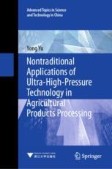Search
Search Results
-
Modification of Phenol Formaldehyde Resins with Wood-Pyrolysis Liquid
AbstractOne of the directions for improving the production of adhesive materials is the modification of phenol formaldehyde resins. Utilizing the...

-
Ultra-High-Pressure Modification of Wood: Densification and Dyeing
The scientific modification of fast-growing forest timber to improve the quality and suitability of the timber is the development trend of the...
-
Substituting phenol in phenol–formaldehyde resins for wood modification by phenolic cleavage products from vacuum low-temperature microwave-assisted pyrolysis of softwood kraft lignin
Wood modification by impregnation and curing inside of the cell wall using phenol–formaldehyde resins (PF resins) is a well-known and commercialized...

-
Effect of targeted acetylation on wood–water interactions at high moisture states
Acetylation is a wood modification used to increase the durability. Although it is known that the wood moisture content is lowered, the exact...

-
Effect of acetylation on wood-water interactions studied by sorption calorimetry
Sorption of water has a profound effect on the material properties of wood. The uptake of water vapour in wood and other materials releases more heat...

-
Fire hazard of epoxy-based transparent wood
Transparent wood is a modern bio-renewable material with great potential for both science and industrial applications. However, the fire hazard of...

-
Improving fast-growing poplar wood with furfuryl alcohol and a hyperbranched polymer
To address drawbacks of significant toughness decrease of furfurylated wood and comprehensively improve properties of low-quality wood, this study...

-
Localization and characterisation of brown rot in two types of acetylated wood
Acetylation is a commercialised chemical wood modification technology that increases the durability of wood against microbial attack. However, the...

-
Microbial Remediation of Preservative-Treated Wood and Reuse of the Decontaminated Wood: A Short Review
Wood, with its excellent properties, has been used by humans for thousands of years. However, it is nonetheless susceptible to biodegradation and...
-
Modification of Cellulose
Cellulose (C6H10O5)n is among the most abundant organic polymers found on Earth. Cellulose, an abundant and renewable natural polymer, is widely used...
-
Modification of Cellulose
Cellulose (C6H10O5)n is among the most abundant organic polymers found on Earth. Cellulose, an abundant and renewable natural polymer, is widely used...
-
Natural polyelectrolyte-functionalized superhydrophilic and antibacterial wood for efficient oil/water separation
As the amount of oily wastewater discharged from industrial and domestic sources increases, materials used for oil/water separation have received...

-
Physical Modification of Biomass
The evolution of civilization has been largely dependent on the utilization of biomass as a source of energy. Recent proposals for a greater use of...
-
Improvement of decorative texture effects, thermal stability, and mechanical properties of Pinus massoniana using a combined dyeing and superhydrophobic modification method
To solve the problem of poor texture decorative effects and inferior functional properties of a fast-growing wood, a combined dyeing and...

-
Biodegradability of Poly (Ɛ-Caprolactone) Modified Wood by Decaying Fungi
In this study, spruce wood was modified by ring-opening polymerization of ε-caprolactone to graft poly (ε-caprolactone) into wood cell wall by...

-
Graphitization of carbonized wood by transition metal catalysis to enhance hydrovoltaic effect
Hydrovoltaic effect is an innovative route to acquire electric energy from low-quality energy of water. Carbonized wood has shown great potential in...

-
Engineered transparent wood composites: a review
Wood is a versatile resource due to its inherent properties such as low density, good weight to strength ratio, unique hierarchical structure,...

-
Modification of Nanocellulose
Nanocellulose (NC) represents a pivotal material for the sustainable strategies of the future. NC comprises cellulose nanofibrils (CNFs), cellulose...
-
A review: additive manufacturing of wood-plastic composites
Wood-plastic composites (WPCs), combined with wood particles as filler and plastic as matrix material, is a kind of sustainable (if recyclable...

-
Surface Modification of Polyethylene
Polyolefins such as polyethylene, polypropylene and their copolymers have excellent bulk physical/chemical properties, are...
